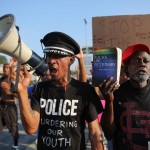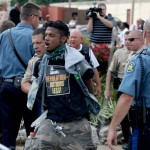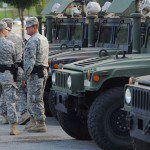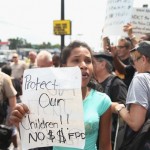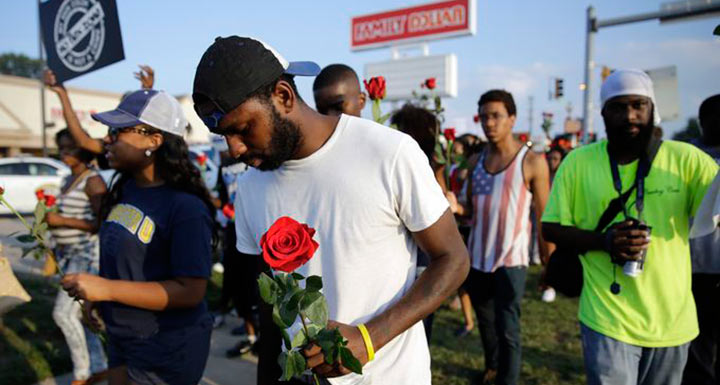
Voices: Firsthand fear, awe on Ferguson’s tense streets
Protesters have clashed violently with police here, the looting and gunshots have terrified residents, and I have witnessed many things that don’t fit neatly into stories about this community’s prolonged period of unrest.
For me, the didn’t-make-it-into-a-story notes are extensive. They sit crumpled up in the glove compartment of my rental car. Wet notebooks soaked by rain store stories about the looter who asked me if I needed help filming, the intimidating officer in riot gear who asked me if I needed a ride back to my car, and the peaceful protesters who guided me to the best spots to take cover while being tear-gassed.
Covering Ferguson’s protests has been memorable, exhilarating and downright exhausting. I suspect many people — reporters, protesters, looters, law enforcement officials — are working on the same two to three hours of sleep I am getting.
Yet I don’t want to sleep. This is too important.
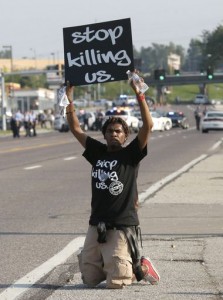 I wake up every morning before sunrise worried that I have missed a development — a new autopsy report, a tragic shooting, President Obama commenting on the situation that I am living. Each night, I pray I can get home safely as I run from gunshots, tear gas and terrified, wildly swerving drivers fleeing the police.
I wake up every morning before sunrise worried that I have missed a development — a new autopsy report, a tragic shooting, President Obama commenting on the situation that I am living. Each night, I pray I can get home safely as I run from gunshots, tear gas and terrified, wildly swerving drivers fleeing the police.
And while at times this feels like a risky assignment, I’ve had moments that have defied the stereotypes of the dangerous looter and the menacing police officer.
There was the friendly looter who, after allowing me to film him carrying off large bottles of liquor, asked me a question that caught me off-guard. “Got all you need, ma’am?” he asked as he struggled to carry out his last bottle of stolen Grey Goose. I nodded yes.
Another looter, carrying bags of stolen food, offered to walk me back to my car as chaos erupted all around us and gunshots rang out.
Then there was the officer, dressed in riot gear and holding plastic handcuffs, who, after hearing that I was parked more than a mile away, offered me a ride to my car.
My reporting has been aided by Good Samaritans. A woman who lives across the street from where Michael Brown died welcomed me into her home when I asked to use the bathroom. A group of praying women across from the Ferguson police station insisted on giving me my first meal of the day at 2 p.m. Sunday: water, chips and a doughnut.
But I’ve also had my share of scary moments. On Friday, as officers were asking protesters to leave, I sat in my car tweeting about the latest developments. When I looked up from my phone, I saw I was surrounded by officers holding rifles. “Go home,” they shouted as I sped off.
Others, I know, have had far worse experiences. On Sunday, a person was shot across the street from where I was standing. Two reporters say they were arrested because police decided they were not moving quickly enough from a McDonald’s where they were working, and other journalists report being harassed by the police. I have watched as protesters have taunted, threatened and pushed journalists who were just trying to do their jobs.
The most important thing that I have encountered is a resilient group of people who are set on voicing their opinions. For them, Michael Brown, the unarmed 18-year-old black man killed by a police officer Aug. 9, is not just a symbol but a personal reminder of the real discrimination people believe they face here.
I have watched mothers cry at the thought that Brown might have been their son. I have seen young men scream at the top of their lungs because they are convinced if things stay the way they are, they, too, could be shot by police. I have encountered a form of civil disobedience that asks us all to question the state of policing in America.
Ferguson is both what you think it is and so much more. Behind the protesting, the looting, the tear gas and the gunfire, there are real people finding ways to pleasantly interact.
Or not.


